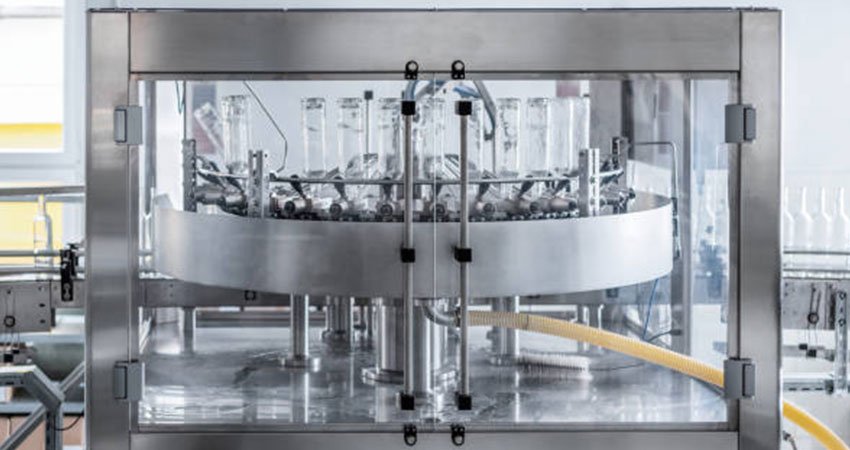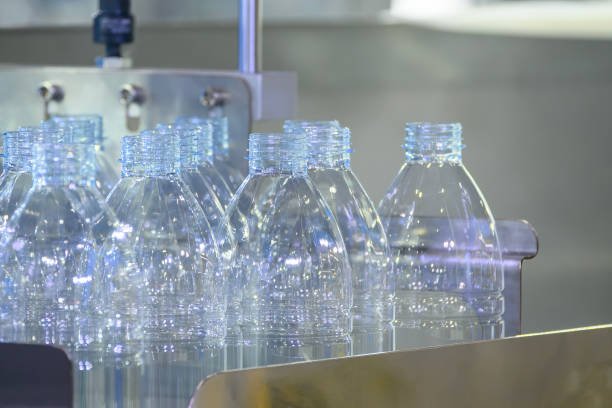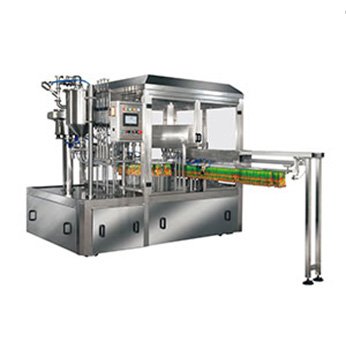In life, we can find all kinds of beverages in stores, but do you know how the beverage in your hand is made? How many procedures does it go through before it reaches your hands? Today, I will explain the beverage manufacturing process to you, and provide some knowledge for you who plan to develop this beverage industry.

1. What is beverage manufacturing?
In our daily life books, you can learn that beverage manufacturing is an industrial process that converts raw materials such as water, sugar, fruits and vegetables, dairy products, and plant extracts into liquid, solid or gaseous products that can be directly drunk through physical, chemical or biological technology. The key process of the beverage manufacturing process lies in the processing of raw materials, the design of beverage formulas, the introduction of sterilization technology, and the packaging process. Other processes can complete the beverage that reaches your hands. Of course, mechanized automation procedures and health also play an important role.
2. Classification of Beverages Manufactured
What are the most manufactured beverages in the world?
With the development of science and technology, various types of beverages are mass-produced to meet the needs of consumers. You can see fermented beverages, extracted/leached beverages, compounded beverages, freshly made new tea supply chain, and molecular cuisine beverages on the market. Today, let’s briefly talk about the differences between these categories.

Alcoholic Beverages
A. Fermented beverages
You can literally understand this type of beverage as a beverage that needs to be fermented. You are familiar with yogurt products and alcoholic beverages. Their process is essentially to use the metabolism of microorganisms such as yeast and lactic acid bacteria to produce flavor substances and active ingredients.
A typical example of acid bacteria fermentation is that the fermentation of yogurt drinks is the symbiosis of Lactobacillus bulgaricus and Streptococcus thermophilus, while kefir is fermented by multiple strains.
We all know that beer in alcoholic fermentation is malt saccharification and yeast fermentation, while rice wine is saccharified and fermented in parallel by Aspergillus.
The difficulty of these fermented beverages lies in the patent barriers of bacterial strains and dynamic monitoring of fermentation, including real-time control of pH and dissolved oxygen.
Non-Alcoholic Beverages (Soft drink manufacture)

B.Cold drink production
You can buy coffee and tea beverages in convenience stores, such as NFC juice (non-concentrated), cold brew tea, and herbal functional drinks. These are extracted using cold extraction technology at low temperatures for a long time to extract coffee or tea, thereby reducing the dissolution of tannins and reducing bitterness.
Another type of CO₂ extraction is to extract high-value components of the product. The common hops essential oil and natural pigment drinks you see are extracted using this method.
C. Energy drink production
The common electrolyte hard drinks and meal replacement shakes you see use microemulsification technology to evenly disperse oil-soluble nutrients (vitamin A/D) in water, and use “sensory omics” to mix flavors. The precise ion ratio can supplement the body’s trace elements. It is one of the drinks that people like after exercise.
D. Juice drinks (soft drink)
Juice drinks are also very popular in the sales market. We often see apple juice, orange juice, tender coconut water and other fresh fruits. Its working principle is: raw material processing → juice extraction and filtration → blending (sugar, acid, etc.) → sterilization (UHT) → filling and sealing → quality inspection and packaging.
E. Carbonated beverages
The carbonation of this beverage follows Henry’s law: at a constant temperature, the solubility of gas in liquid is proportional to the partial pressure of gas on the liquid surface. It is packaged by isobaric filling technology. The manufacturing of Coca-Cola and soda drinks that you are familiar with is produced and filled using this principle.
3. Beverage manufacturing process
-What are the tools and equipment in the beverage manufacturing process?
Drink Production Process
In the production process, you need to learn to control accurately from raw materials to finished products so that you can control the funds for your startup.
Part I: You can understand from the raw material processing and equipment synergy
- System innovation of water treatment
If you use RO membrane intelligent backwashing, you can reduce the cost of consumables by 30%: real-time monitoring of TDS value (accuracy ±2ppm), automatically start pulse backwashing when the desalination rate is <95%, and extend the life of RO membrane to 18 months (traditional manual maintenance is only 12 months).
Using ozone concentration closed-loop control, you can avoid over-oxidation: PID algorithm dynamically adjusts the output of the ozone generator (0.1-0.3ppm), with ORP sensor online feedback, the sterilization efficiency is increased by 25% and there is no risk of bromate residue.

- Accuracy of batching equipment
If you use a loss-in-weight feeder, the error can be ≤±0.5%: suitable for special-shaped materials such as fruit particles and coconut fruit, double-screw feeding + weight compensation algorithm to solve the filling blockage problem caused by traditional volume measurement.
If your product has viscosity, the online viscometer generally has a range of 0.1-1000cP, which can provide real-time feedback on the viscosity changes of syrup/emulsion, and automatically adjust the speed of the homogenizer (500-3000rpm) to prevent dripping or foam overflow during subsequent filling.

- Matching of sterilization process and filling equipment
In fact, beverage products need to be matched with sterilization process to meet the production hygiene standards. For the optimization of the sterilization filling link, you can use HTST sterilization (72℃/15s) aseptic filling or UHT sterilization (137℃/4s) hot filling.
The working principle of aseptic filling is to ensure that the surface temperature of the filling valve is ≥85℃ (achieved through steam barrier) and the microbial interception rate is >6log.
Key parameters of equipment: Valve mouth sealing ring material: EPDM (temperature resistance 150℃) is better than silicone (temperature resistance 120℃)
Bottle mouth sterilization efficiency: 35% hydrogen peroxide spray + 60℃ hot air drying, residual amount <0.1ppm
Hot filling requires the temperature to be maintained at 88±2℃.
The equipment must be equipped with a bottle preheating module to avoid deformation of PET bottles due to temperature difference exceeding 50℃.
The oxygen content of the nitrogen headspace system is <2%, and the shelf life is extended to 12 months.

Filling and Packaging
After the raw materials and formula are mixed, the finished product needs to be filled and packaged. The filling part is divided into semi-automatic and fully automatic. You may have heard of semi-automatic filling. This type of packaging machine is to set the quantitative, and then you need to open the container and fill it. The subsequent packaging is done manually. But today we focus on fully automatic equipment because fully automatic equipment is the development trend of mass production.
The following is a comparison of the accuracy and real-time cases of 4 filling technologies:
| Type | Accuracy | Technical advantages | Practical case analysis data |
| Isobaric filling | ±0.5% | Self-cleaning CO₂ recovery module (energy saving 30%) | Carbonated beverage filling line, recycling module saves 300,000 US dollars in costs |
| Vacuum filling | ±0.3% | Anti-wall ultrasonic vibrator | High-viscosity jam filling line, the mango jam filling loss rate was reduced from 3% to 0.8% |
| Gravity filling | ±1% | Liquid level photoelectric sensor + servo refill | Mineral water filling line, filling speed exceeds 600 bottles/minute |
| Quantitative filling | ±0.2% | Magnetic suspension metering pump (pulsation elimination) | High-end plant protein functional beverage filling line, ginseng concentrate filling accuracy reaches 99.97% |

4. The materials for the beverage manufacturing process
The packaging materials in the beverage manufacturing process are one of the important factors you need to consider, in terms of cost and performance. In life, you often see PET bottles, aluminum cans, paper-based packaging, and other things. So what are the considerations for using these materials in this process? Let’s analyze their respective characteristics.
- PET bottles: technical breakthroughs in lightweight and heat resistance
When you upgrade the bottle blowing equipment to a 48-cavity mold (traditionally 32 cavities), the PET bottle has a three-layer co-extrusion technology, which is the outer layer: UV-resistant modified PET, the middle layer: oxygen-blocking EVOH, and the inner layer: food-grade PET. This extends the shelf life of the filled beverage by 40%.
On the other hand, high-temperature resistant PETG (heat deformation temperature increased to 85°C) can replace some glass bottles to prevent the bottle from shrinking and deforming, and the filling equipment needs to be equipped with a gradient cooling module.
Key points for equipment adaptation:
The pressure of the bottle-blowing machine needs to be ≥ 40 bar (traditional bottles only need 25 bar) to ensure that the verticality error of thin-walled bottles (18g/500ml) is less than 0.3mm
The filling line adds bottle-mouth ovality detection (tolerance ±0.1mm) to avoid bad effects when sealing and capping later.

- Aluminum cans: low carbonization and functional coating breakthroughs
If you want to reduce the cost of aluminum can raw materials, the innovative way is to thin the aluminum material, the can body from 0.28mm→0.21mm, in order to ensure the uniformity of stretching, the cupping equipment needs to upgrade the servo drive.
The inner wall of the aluminum can nano-coating replaces the traditional BPA epoxy resin. You need to add coating integrity detection to the canning line, and the conductivity method has an accuracy of ±5%.
But although the cost of raw materials is saved, the life of the canning mold is reduced by 30%, and tungsten steel coated molds are required (the cost increases by 25%). This requires you to weigh it.

- Paper-based packaging: Barrier properties and production line compatibility challenges
Carton packaging is also one of the common beverage packaging methods in our lives. It uses PLA film instead of PE film. Although the raw materials are degradable, they have poor heat resistance and the temperature of the filled product must be ≤50℃. Traditional UHT filling requires the modification of the cooling system before filling.
On the other hand, graphene-enhanced paperboard can reduce the oxygen permeability by 90%, but the equipment needs to be equipped with an electrostatic eliminator, and the conductive particles interfere with the filling valve.

5. Challenges in Beverage Manufacturing
With the continuous development of science and technology and industrial technology, fully automated procedures are the future trend of the beverage industry. At the same time, Beverage Manufacturing also faces a variety of problems. These are presented to you based on the problems we have encountered in filling over the years, such as: filling beverages with multiple fluids, the coordination of CO₂ sterilization and filling, the efficiency dilemma of paper-based packaging production lines, the special requirements of hydrogen energy beverage manufacturing, the flexible manufacturing challenges of personalized production, the protracted battle of microbial film prevention and control, the stability of viscosity fluid delivery, and other challenges. If you also want to become a qualified Beverage Manufacturing, these are the issues you must consider.
6. FAQS about Beverage Manufacturing
1. What is the process involved in the production of beverages?
The main processes of beverage production are briefly summarized as follows:
- Raw material processing: purifying water (filtration, sterilization), dissolving sugar or sweeteners, and processing raw materials such as juice/tea;
- Mixing: mixing water, sugar, acidulant, flavor, pigment, and other ingredients according to the formula;
- Sterilization: using pasteurization (72℃/15 seconds) or UHT (135℃/4 seconds) to kill microorganisms;
- Filling and sealing: Filling bottles/cans under sterile conditions and sealing (such as carbonated beverages need to be injected with CO2 first);
- Quality inspection and packaging: testing pH value, gas content and other indicators, labeling and packaging. (Juice requires pulp homogenization, and tea drinks will increase the extraction process)
2. What are the steps in preparing beverages?
If you want to develop a beverage industry, you should first investigate your local environment and resources to determine the type of beverage, and then customize your own beverage based on the considerations mentioned above.
3. What are the steps in preparing juice?
If your drink is juice, its production process includes raw material processing → juice extraction and filtration → blending (sugar, acid, etc.) → sterilization (UHT) → filling and sealing → quality inspection and packaging.
Conclusion
The above is the knowledge about the beverage manufacturing process that we have listed based on years of filling. I hope this will be helpful to you. Secondly, we also support the customization of a filling machine. If you want to improve your machine equipment or buy a suitable machine now, you can contact us and we will design a filling line for you.





